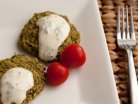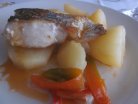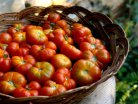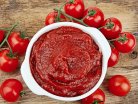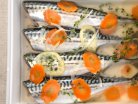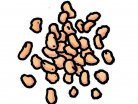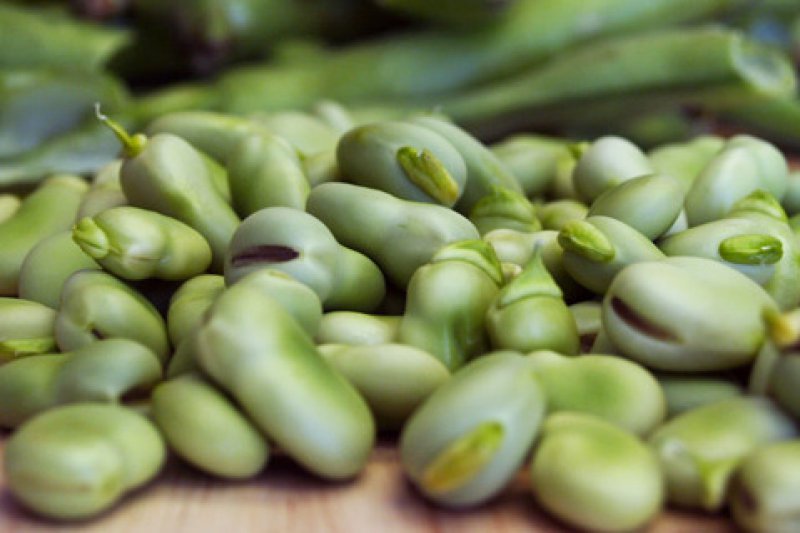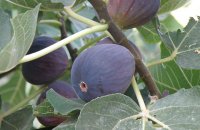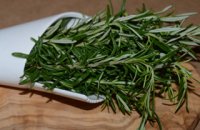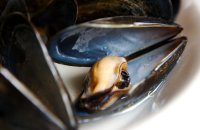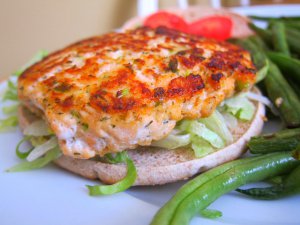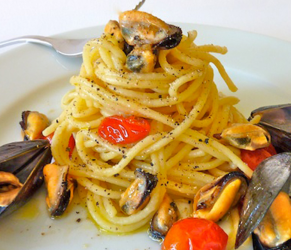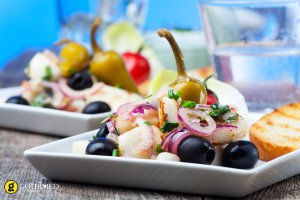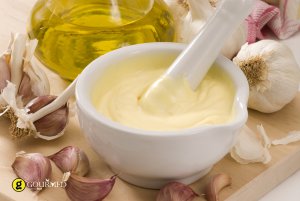First cultivated in Africa and Sicily, artichokes can be cooked in various ways. Whether consumed raw or cooked, it is actually the heart of the plant’s flower bud that you eat, after it has been stripped of its outer leaves and thoroughly cleaned. The vividly green outer leaves of artichokes will brown as time passes, but you can preserve the vegetable by simply placing it in a bowl of lemon water until you’d like to use it. Artichokes are at their freshest in the spring, but can be bought preserved year round. Especially the ones from Tinos are an incredible Greek delice. Otherwise, you can preserve your summer artichokes in the freezer by scalding them in oil and herbs or water with lemon. They will grow tender and delectable. A very simple way to enjoy them is to clean them of their outer leaves and stems, cutting them into very thin slices, and serving them with an oil and lemon dressing, parmesan and rocket. At Easter time, when they can be bought fresh, you will find them in a wide variety of Mediterranean dishes.
An asparagus is the stem of the cultivated plant without its leaves, a vegetable that can be quite pricey, as its cultivation process can last well over three years. You can find green or white asparagus year round at almost any supermarket, but in the spring, all of Greece is redolent of wild asparagus- a variety that is perhaps the most delicious kind. Asparagus are very sensitive and must be cooked carefully, but their preparation is really quite simple. With a potato peeler or a small knife, first peel off the hard skin on the lower half of the vegetable, taking care not to break its tip. They usually need blanching as well, meaning that you must dip them into boiling water for two to three minutes and then let them cool down immediately, so as to not ruin their texture. You can also cut them in half, serving their tips in the above manner, and then prepare a tasty soup with the rest of the vegetable, or a sauce for either meat or pasta. Arguably the best way to enjoy asparagus is with a simple oil and lemon dressing, freshly grated pepper, grated parmesan cheese, and a poached egg. And the hollandaise sauce (egg yolks with butter), or the maltaise – which is a hollandaise with orange – is the ideal accompaniment for asparagus.
As another favorite ingredient of the Mediterranean springtime cuisine, fava beans come from Persia and Africa. Dry fava beans are much more nutritious than fresh ones, but you must be careful when serving them, as a surprisingly large number of people are allergic to them. Their preparation is not difficult; after peeling them, you cook them either on their own or with other vegetables or with meat. A very simple way to serve fresh fava beans is to boil them for twenty minutes in salted water and then purée them with olive oil, lemon juice, and freshly grated pepper. They add a characteristic flavor to salads, and are particularly delicious when combined with other fresh vegetables like rocket, fresh onion, and dill. When combined with olive oil, artichokes and peas, they make the perfect garnish for the Easter lamb. Fava beans are also commonly referred to as broad beans.
Springtime Artichokes, Asparagus and Fava Beans in Mediterranean Cuisine
Around Easter time, the Mediterranean is redolent of three spring vegetables: the artichoke, the asparagus, and the fava beans.
Enjoy Gourmed's springtime favorites! You cannot imagine how the recipes abound.
Tips
All spring vegetables are great just steamed and served with any dipping sauce.
Category:
Related Articles
Most Popular recipes

